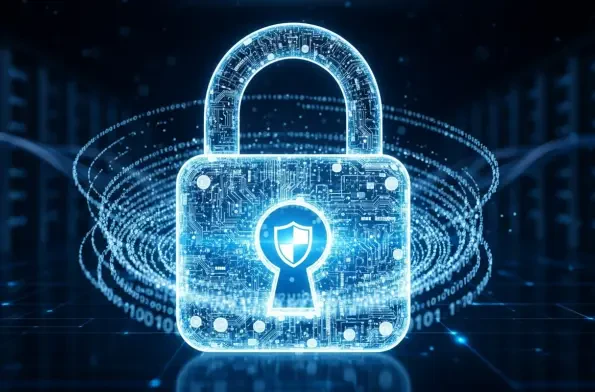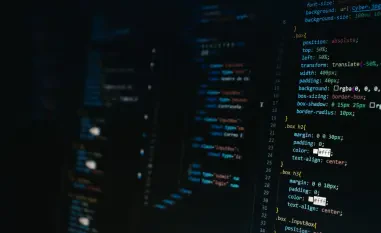In an era where data breaches cost businesses an average of $4.4 million per incident, the cybersecurity and compliance industry stands at a critical juncture, facing unprecedented challenges. Imagine a Fortune 500 company, proudly displaying its ISO 27001 certification, only to fail a basic penetration test, exposing vulnerabilities that could cripple its operations. This stark reality underscores a pressing challenge: compliance does not always equal security. Amid this landscape, Oneleet, a rising player in the field, has secured $33 million in Series A funding to challenge conventional approaches, prioritizing robust security as the foundation for regulatory adherence. This report delves into how Oneleet is reshaping the industry, examines current trends and challenges, and explores the broader implications for businesses navigating an increasingly complex threat environment.
The State of the Cybersecurity and Compliance Industry
The cybersecurity and compliance sector has become a cornerstone of modern business strategy, as organizations grapple with escalating cyber threats that can devastate operations and reputations. With digital transformation accelerating across industries, protecting sensitive data and ensuring regulatory adherence are no longer optional but essential. The industry encompasses critical areas such as data protection, risk management, and adherence to legal standards, serving as a shield against financial losses and legal repercussions in a world where cyberattacks are growing in frequency and sophistication.
Key segments within this space include regulatory compliance, penetration testing, and cloud security, each addressing distinct yet interconnected needs. Major players like Vanta and Secureframe have carved out significant market share by focusing on automating compliance processes, streamlining audits, and reducing administrative burdens. However, technological advancements, particularly the integration of artificial intelligence, are reshaping the landscape, enabling more predictive threat detection and automated risk assessments, while also introducing new vulnerabilities that attackers exploit with alarming precision.
This dynamic environment reflects a broader shift toward proactive security measures, as businesses recognize the limitations of traditional compliance frameworks. The rapid adoption of cloud-based systems and remote work infrastructures has further heightened the demand for comprehensive solutions that safeguard against both external threats and internal oversights. As the industry evolves, companies are under pressure to balance innovation with stringent security protocols, setting the stage for disruptors like Oneleet to redefine established norms.
Industry Trends and Market Dynamics
Emerging Threats and Security Needs
The cybersecurity landscape is undergoing a profound transformation, driven by the rise of AI-powered threats that challenge even the most fortified defenses. Attackers are leveraging generative AI to craft deepfakes, scale social engineering attacks, and develop malware that evades conventional detection mechanisms. These sophisticated tactics have shifted the battleground, forcing businesses to rethink their security postures beyond mere compliance checklists and toward integrated, adaptive solutions.
Beyond technological threats, there is a growing acknowledgment among enterprises that compliance must transcend a superficial exercise. Many organizations now view adherence to standards as a strategic component of their risk management framework, rather than a box to check for auditors. This shift is fueling demand for platforms that embed security into the fabric of compliance, ensuring that meeting regulatory requirements also fortifies defenses against real-world attacks.
The convergence of these trends highlights a critical need for holistic approaches that address both emerging threats and evolving business priorities. Companies are increasingly seeking tools that provide continuous monitoring and actionable insights, rather than static certifications that may fail to prevent breaches. This changing mindset is creating opportunities for innovative solutions that bridge the gap between regulatory mandates and genuine cybersecurity resilience.
Market Growth and Future Outlook
Data breaches continue to exact a heavy toll, with the average cost per incident reaching $4.4 million, according to recent industry studies. Compounding this challenge, nearly 97% of organizations have encountered AI-related security incidents, revealing a pervasive gap in preparedness as businesses adopt advanced technologies without adequate safeguards. These staggering figures underscore the urgent need for robust cybersecurity measures in an era of relentless digital threats.
Looking ahead, the market for cybersecurity and compliance solutions is poised for significant expansion, with projections indicating sustained growth through 2027. Analysts attribute this trajectory to increasing regulatory scrutiny across sectors, coupled with the rising complexity of cyber threats. Businesses are expected to allocate greater resources to platforms that offer scalable, security-first approaches, driving innovation in areas such as automated threat detection and real-time risk mitigation.
This growth outlook signals a pivotal moment for the industry, as demand for comprehensive tools intensifies amid evolving challenges. Companies that can deliver integrated solutions, blending compliance with actionable security, are likely to gain a competitive edge. As regulatory frameworks tighten and cyber risks multiply, the market is set to reward those who prioritize adaptability and foresight in addressing enterprise needs.
Challenges in the Compliance Landscape
A fundamental issue plaguing the compliance sector is the disconnect between traditional practices and actual security outcomes. Certifications like ISO 27001, while prestigious, often fail to translate into effective protection, as evidenced by certified organizations struggling to pass penetration tests. This gap reveals a systemic flaw: compliance is frequently treated as a formality rather than a mechanism for safeguarding critical assets.
Technological hurdles further complicate the landscape, particularly with the advent of AI-empowered attacks that outpace conventional defenses. Simultaneously, regulatory complexities add layers of difficulty, as businesses must navigate a web of standards that vary by region and industry. These challenges demand a shift toward proactive strategies, such as continuous vulnerability scanning and real-time threat intelligence, to ensure that compliance efforts align with tangible security improvements.
Addressing these obstacles requires a reevaluation of how compliance is implemented and measured. Solutions that integrate expert-led audits with automated monitoring can help bridge the divide between regulatory adherence and robust defense mechanisms. By focusing on dynamic, security-driven approaches, the industry can move beyond static certifications and build frameworks that withstand the sophisticated threats of the digital age.
Regulatory Environment and Compliance Standards
The regulatory framework shaping the cybersecurity and compliance industry is both expansive and intricate, with standards like SOC 2, ISO 27001, HIPAA, and GDPR setting the benchmark for business practices. These regulations mandate stringent data protection and operational protocols, compelling organizations to align their processes with legal and ethical obligations. Failure to comply can result in severe penalties, making adherence a top priority for enterprises worldwide.
Oneleet distinguishes itself in this environment by embedding security at the core of its compliance strategy, a contrast to competitors who often prioritize audit automation over comprehensive defense. By focusing on continuous system scanning and expert assessments, the company ensures that meeting regulatory demands also fortifies businesses against vulnerabilities. This integrated approach addresses the shortcomings of traditional methods, where certifications may mask underlying risks.
The importance of robust defenses in navigating regulatory requirements cannot be overstated, as non-compliance carries not only financial repercussions but also reputational damage. Companies must adopt solutions that provide transparency and accountability, ensuring they can demonstrate adherence while maintaining airtight security. As regulations evolve, platforms that offer flexibility and depth in addressing these standards will play a crucial role in shaping industry best practices.
Oneleet’s Vision for the Future of Compliance
With its recent $33 million Series A funding, Oneleet is charting an ambitious path to transform compliance through a security-first lens. The investment, led by prominent backers, will fuel expansion efforts, including the recruitment of top-tier security experts and the enhancement of AI-driven capabilities for threat modeling and risk assessment. This financial boost positions the company to scale its operations and refine its platform amid growing market demand.
Oneleet’s innovative model focuses on continuous system scanning from an attacker’s perspective, coupled with formal penetration tests to identify and mitigate vulnerabilities before they can be exploited. This proactive stance, supported by policy management and compliance automation, sets it apart in a field where many solutions address only surface-level requirements. The company’s commitment to human oversight in AI applications further ensures reliability, guarding against potential errors in automated processes.
Looking to the future, Oneleet is well-equipped to tackle emerging disruptors such as evolving AI threats and the need for adaptive defenses. By maintaining a focus on integrated tools and expert guidance, the company aims to stay ahead of industry challenges, offering businesses a reliable partner in navigating complex security landscapes. This vision underscores a broader ambition to redefine compliance as an outcome of genuine protection, rather than a standalone goal.
Conclusion and Industry Implications
Reflecting on the insights gathered, Oneleet has carved a distinctive niche by challenging the status quo of compliance with a security-centric model, bolstered by substantial funding and industry support. This shift tackles a long-standing flaw in the sector, where regulatory adherence often fails to equate to real protection, leaving businesses exposed despite certifications. The company’s approach, blending continuous monitoring with expert audits, offers a compelling blueprint for aligning compliance with actionable defense.
Moving forward, the broader cybersecurity and compliance sector must prioritize investment in integrated platforms that address both regulatory and security needs simultaneously. Stakeholders should consider fostering innovation in AI-driven tools while ensuring human expertise remains central to decision-making processes. As threats grow more sophisticated, collaboration between industry players and regulators will be essential to develop adaptive frameworks that safeguard enterprises effectively.
Lastly, businesses navigating this landscape should focus on adopting solutions that provide long-term resilience over short-term compliance wins. Emphasizing scalability and flexibility in security strategies will prepare organizations for unforeseen challenges, ensuring they remain agile in a rapidly changing environment. Oneleet’s journey highlights the potential for transformative change, pointing toward a future where security and compliance are no longer at odds but seamlessly intertwined.













